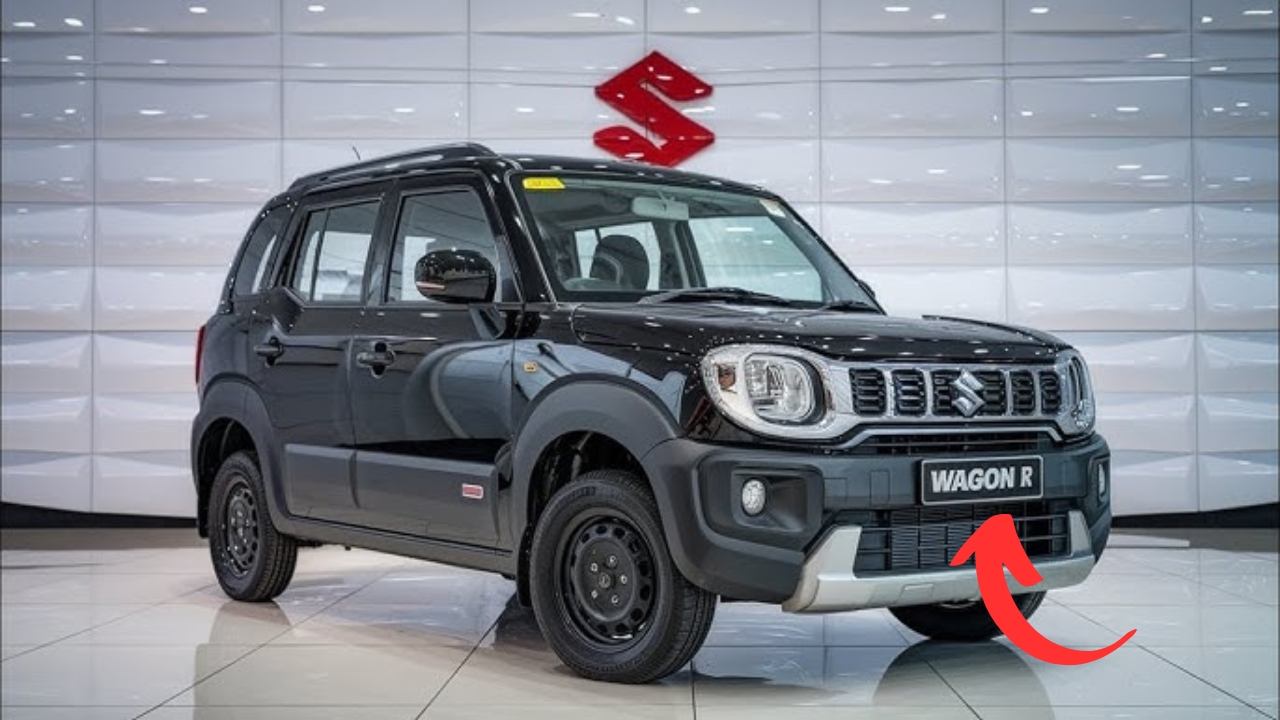Maruti Suzuki Wagon R: For over two decades, the Maruti Suzuki Wagon R has remained an undisputed champion in India’s family car segment. This iconic “tall boy” hatchback has consistently delivered on its promise of practicality, reliability, and affordability. Now, as we move through 2025, the Wagon R is set to make history once again with groundbreaking flex-fuel technology and significant safety enhancements that position it as a pioneer in sustainable mobility.
Six Airbags Standard: A Safety Revolution for the Masses
The most significant update to the 2025 Wagon R comes in the form of enhanced safety equipment. After years of offering just two front airbags, Maruti Suzuki has now made six airbags standard across all variants—a move that demonstrates the company’s commitment to democratizing safety features. Previously, such comprehensive airbag systems were typically reserved for premium vehicles, but the Wagon R breaks this barrier by offering flagship-level protection at an accessible price point.
This safety upgrade extends beyond airbags. All passengers now benefit from three-point seatbelts, replacing the previous lap-type rear center seatbelt. Combined with standard features like ABS with EBD, Electronic Stability Program (ESP), central locking, and rear parking sensors, the 2025 Wagon R offers peace of mind that rivals vehicles costing significantly more.
The timing of these safety enhancements couldn’t be better. With Indian families becoming increasingly safety-conscious, the Wagon R’s new safety suite addresses a crucial market demand while maintaining its value-for-money proposition.
The Flex-Fuel Future: Leading India’s Green Mobility Transition
Perhaps the most exciting development surrounding the Wagon R is its upcoming flex-fuel variant, which promises to revolutionize how Indians think about alternative fuels. After multiple showcases at prestigious automotive events including the Auto Expo 2023 and Bharat Mobility Global Expo 2024, production is expected to commence in November 2025.
The Wagon R Flex-Fuel represents a technological leap that could reduce tailpipe greenhouse gas emissions by an impressive 79% when running on E85 fuel. This eco-friendly powerplant can seamlessly operate on any ethanol-petrol blend ranging from E20 (20% ethanol) to E85 (85% ethanol), making it incredibly versatile for India’s evolving fuel infrastructure.
Under the hood, the flex-fuel variant utilizes a modified 1.2-liter naturally aspirated engine producing 88.5 horsepower and 113 Nm of torque. The engineering modifications include ethanol sensors, heated fuel rails for reliable cold starts, and an upgraded engine management system that automatically adjusts to different fuel blends. This technological sophistication ensures that performance remains consistent regardless of the ethanol content in the fuel.

Design Evolution: Fresh Appeal with Familiar Reliability
The 2025 Wagon R maintains its distinctive tall-boy design philosophy while incorporating contemporary styling elements that appeal to modern buyers. New dual-tone color combinations breathe fresh life into the exterior, with options like red-black, grey-black, and blue-white combinations that give the vehicle a more youthful and dynamic appearance.
Interior updates focus on premium feel improvements, including refreshed dashboard textures, enhanced seat fabrics with better cushioning, and additional storage solutions throughout the cabin. The highlight remains the 7-inch SmartPlay Studio infotainment system with improved resolution and faster response times, supporting both Android Auto and Apple CarPlay for seamless smartphone integration.
Despite these updates, the Wagon R retains its core strength: exceptional space utilization. The tall-boy design continues to provide impressive headroom and legroom for all occupants, while the 341-liter boot space handles family cargo needs efficiently.
Market Performance and Value Proposition
Recent sales figures demonstrate the Wagon R’s enduring appeal. With 12,930 units sold in June 2025 alone, it maintains its position as one of India’s best-selling hatchbacks. This consistent performance reflects the vehicle’s ability to meet diverse customer needs across urban and rural markets.
Pricing remains competitive, with the 2025 model range starting at ₹5.79 lakh and extending to ₹7.62 lakh (ex-showroom). The recent introduction of accessible financing options, including zero down payment schemes and EMIs starting from ₹5,400, makes the Wagon R even more attainable for first-time car buyers.
Engine Options: Power and Efficiency in Perfect Balance
The current Wagon R lineup offers two proven K-Series engines: a 1.0-liter three-cylinder unit producing 67 horsepower and a 1.2-liter four-cylinder engine generating 90 horsepower. Both engines are now E20 fuel compliant, preparing customers for India’s gradual transition to higher ethanol blends.
The 1.0-liter variant also offers a factory-fitted CNG option, delivering exceptional fuel economy of up to 38 km/kg. This dual-fuel capability provides customers with flexible operating costs, particularly beneficial for high-mileage users.
Transmission choices include both five-speed manual and AMT automatic options, catering to diverse driving preferences and traffic conditions across Indian cities.
Oppo company launched Oppo Reno 12 Pro 5G smartphone with 512GB storage
Maruti Suzuki Wagon R Looking Ahead: A Sustainable Future
As Maruti Suzuki prepares to launch the flex-fuel variant, the Wagon R stands poised to lead India’s transition toward sustainable transportation. The company’s broader strategy includes achieving 15% electric vehicle sales, 25% hybrids, and 60% alternative fuel vehicles (including CNG, biogas, and ethanol) by 2030.
The Wagon R’s evolution from a simple family car to a technology-forward, safety-conscious, and environmentally responsible vehicle reflects both Maruti Suzuki’s innovation capabilities and the changing expectations of Indian consumers. With its combination of proven reliability, enhanced safety, and pioneering flex-fuel technology, the Wagon R continues to set benchmarks in India’s automotive landscape